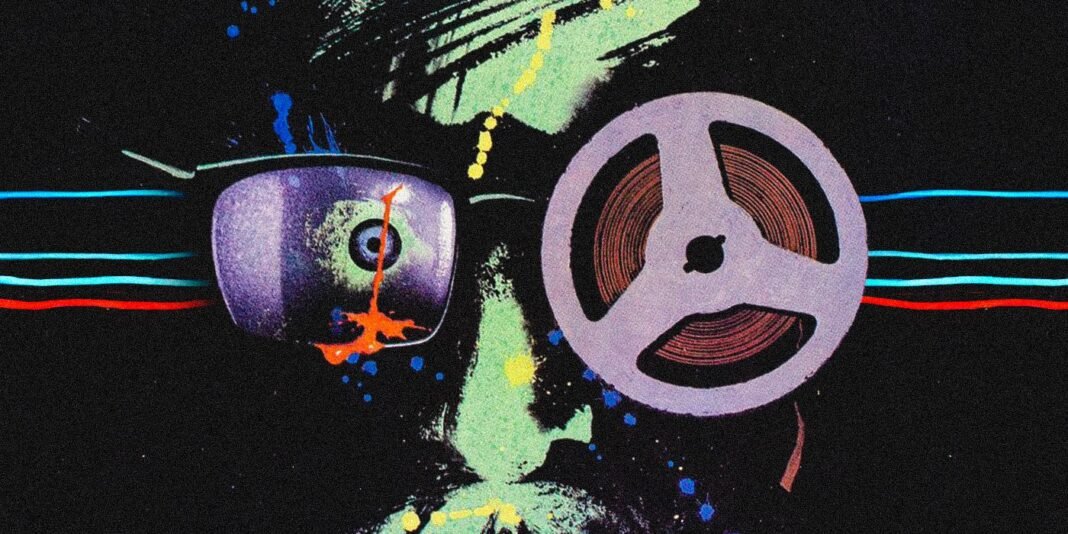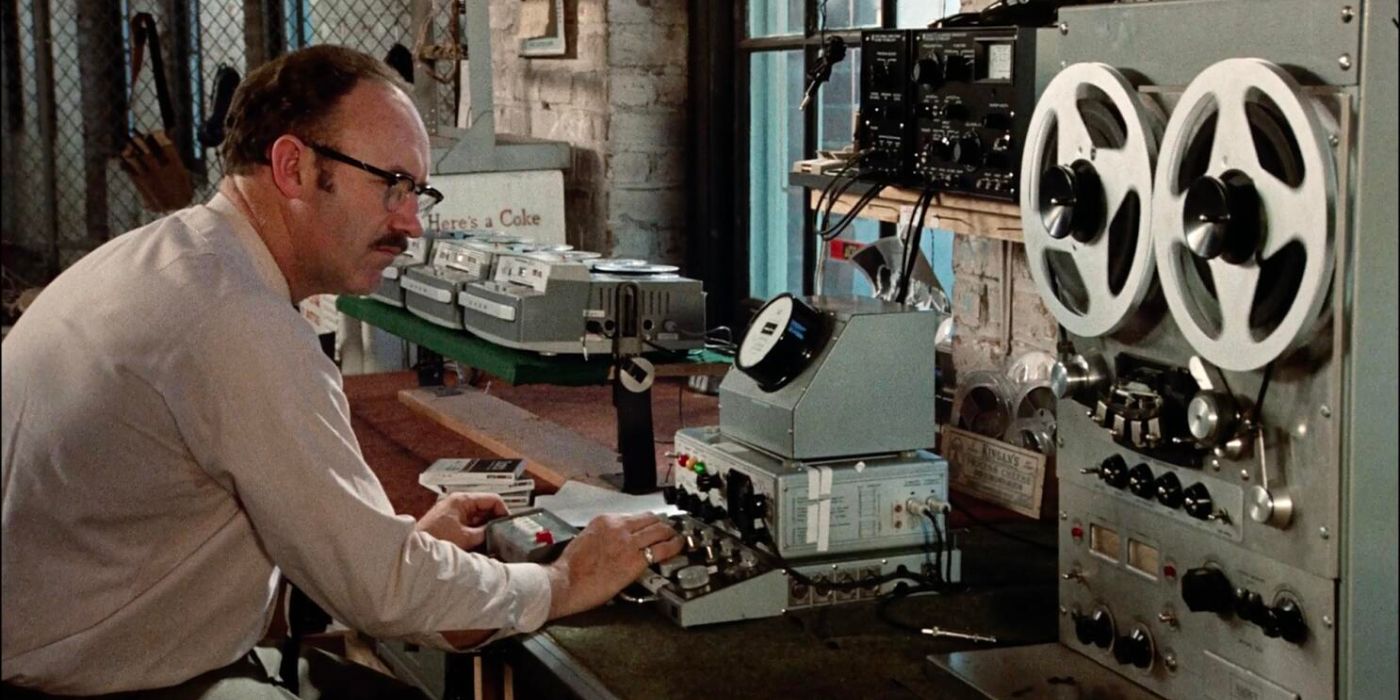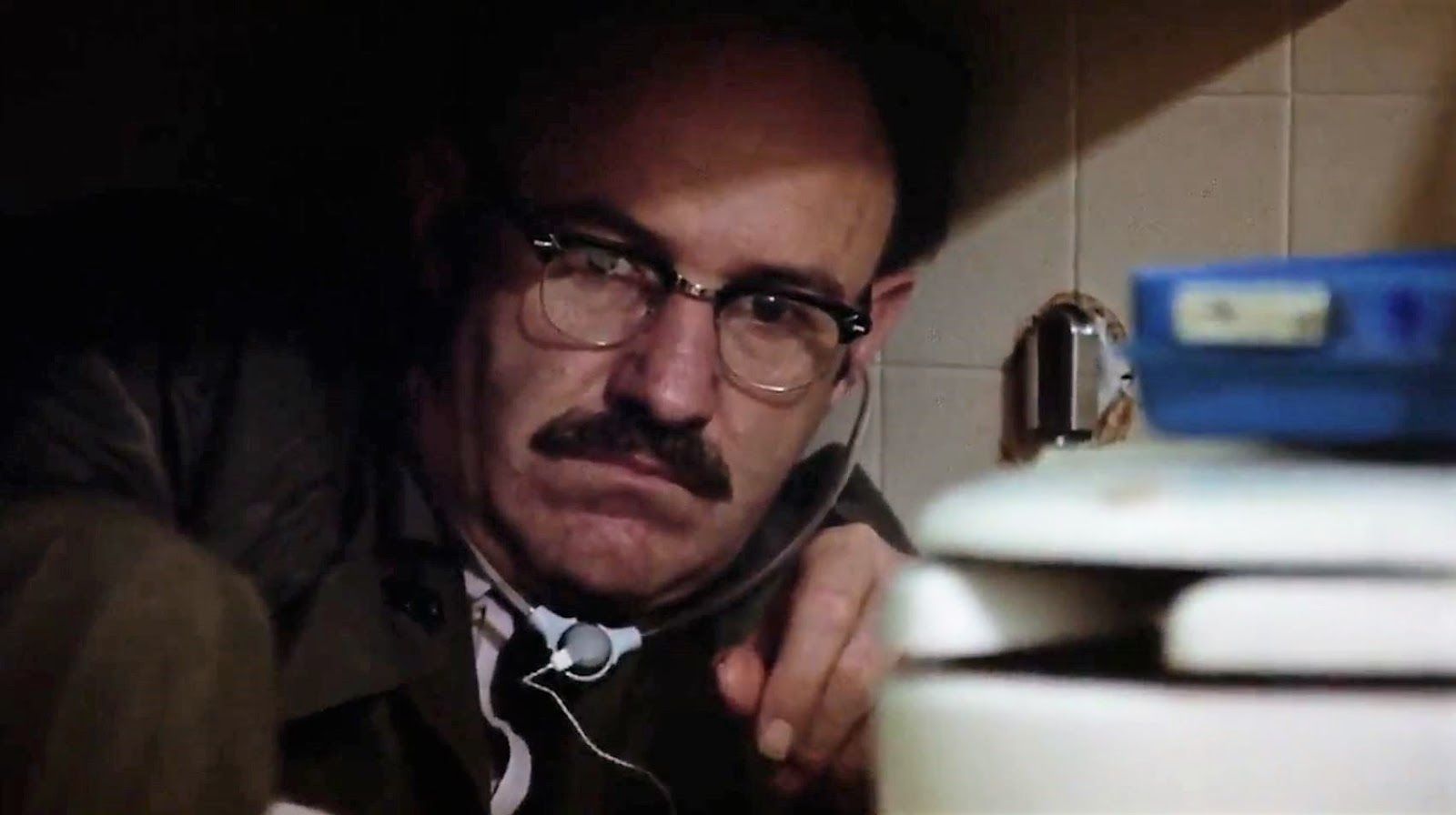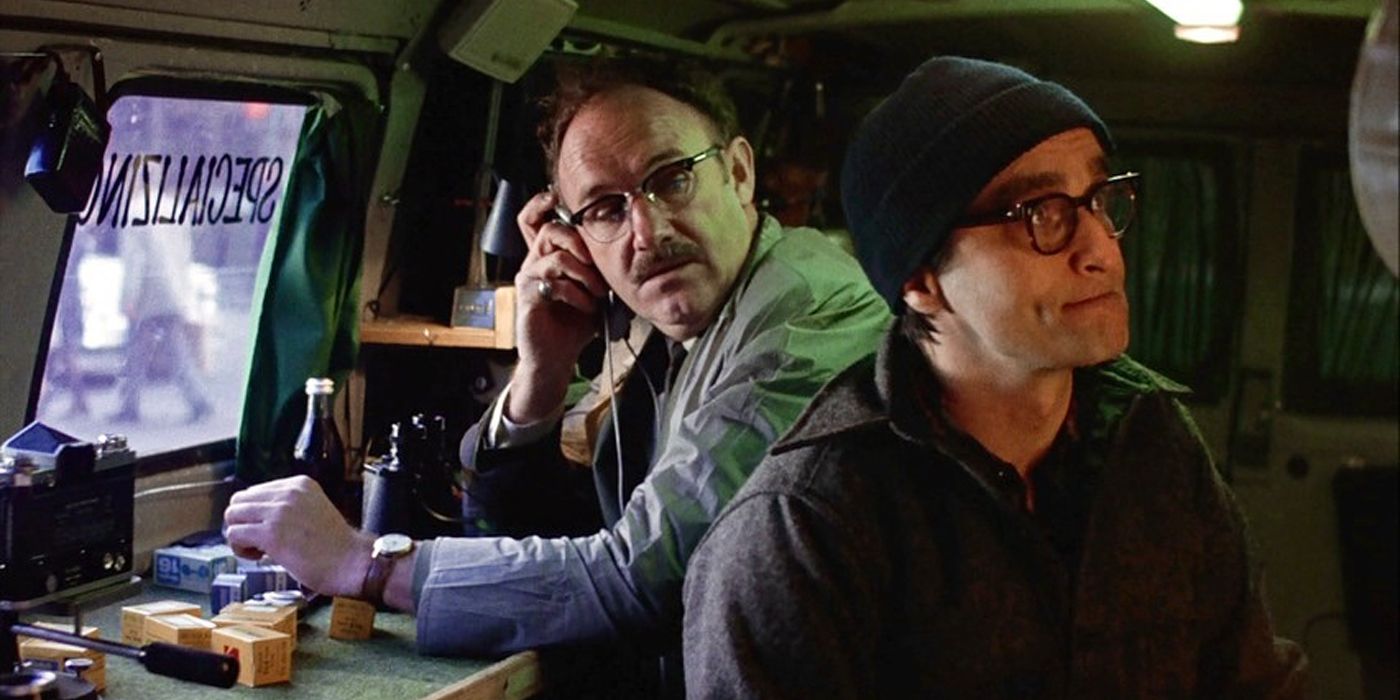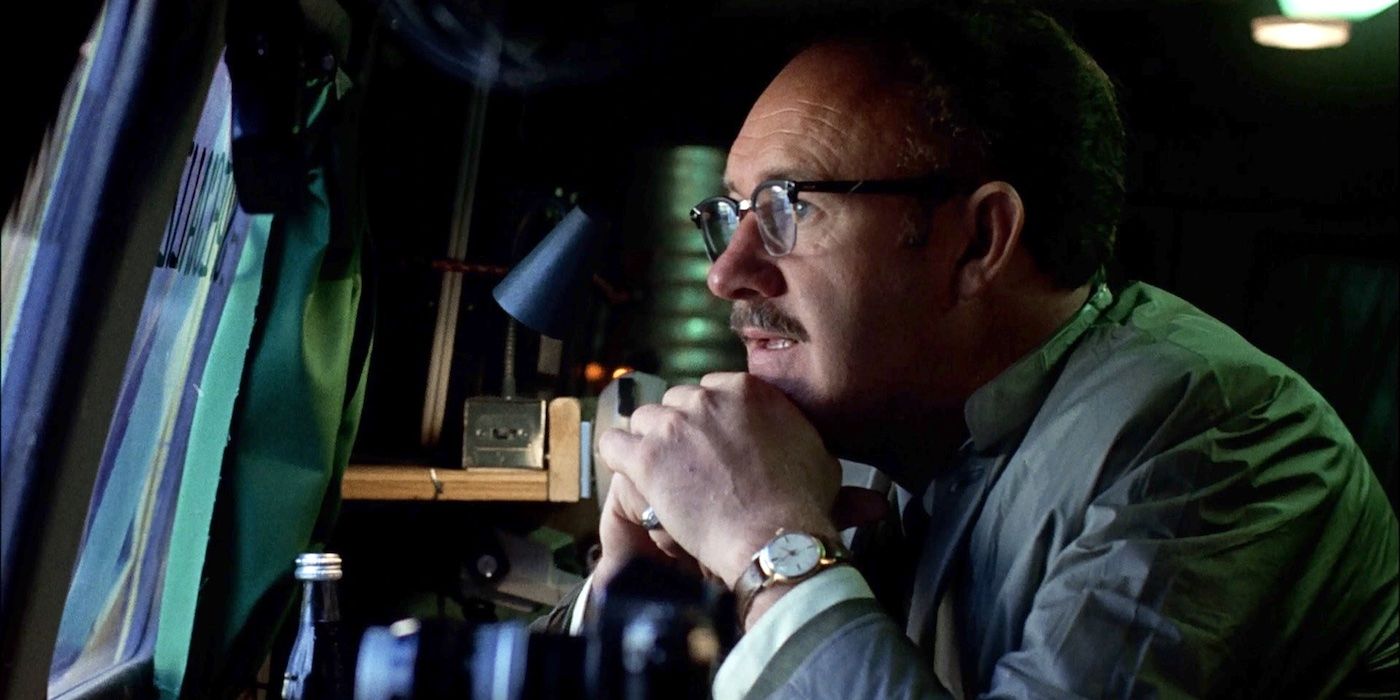In the 1970s, Americans carried the burden of impending doom. Following the political and social upheaval of the late 1960s, the spirit of the United States was spiraling into the abyss. At the start of the decade, due to the lingering shadow of the Vietnam War and the Watergate scandal/cover-up, paranoia upended liberty and justice as the defining trait of the country. Films, thanks to a radical new wave entering the mainstream, quickly responded to the national psyche with a new subgenre of psychological dramas known as the paranoid thriller. To be properly initiated into New Hollywood, a filmmaker must interpret the state of domestic affairs with unflinching cynicism and doubt, which was most disturbingly exemplified by The Conversation, the film that further cemented the legacy of Francis Ford Coppola and calcified the ’70s as the era of paranoia.
New Hollywood Filmmakers Brought Paranoia to the Big Screen in the 1970s
The emergence of New Hollywood, the anti-establishment wave of filmmaking that formulated in the late ’60s and early ’70s, was no coincidence, as the first generation to embrace the opportunities of film school entered the industry at a vulnerable period. Influential filmmakers that are still relevant today, including Coppola, Martin Scorsese, Steven Spielberg, Brian De Palma, and George Lucas, worked within the system and redefined the authorship of film. The current cinematic landscape of the time, notably hindered by bloated musicals with pastiche set pieces, did not reflect the American climate more accurately portrayed on the nightly news, which depicted ground-level footage of combat in the Vietnam jungle and anti-war protests in the streets. 1967, which saw the release of Bonnie and Clyde and The Graduate, changed everything. From there on out, mainstream films were not only going to reflect the current American malaise and dystopia, they were going to push the formalism of the art form.
After you direct The Godfather, one could reasonably expect complete creative autonomy, and the freedom to choose any project he desired was what Coppola received. The behind-the-scenes chaos of The Godfather nearly broke his spirit, but Coppola proved everyone wrong and created an undeniable masterpiece. Unlike The Godfather, which was preexisting material that he was reluctant to pursue, The Conversation was one from the heart. According to Coppola, the film “is a personal film based on my own original screenplay; it represents a personal direction I wanted my career to take.” The film was an original script that he had written in the mid-60s, an homage to the Italian expressionist cinema of the period, notably Michelangelo Antonioni‘s Blowup. At the Academy Awards held in 1975, Coppola was competing against himself, as both The Conversation and The Godfather Part II were nominated for Best Picture. While the continuation of Michael Corleone’s (Al Pacino) story took home the top prize at the Oscars, The Conversation won the Palme d’Or, the top prize at the Cannes Film Festival.
Francis Ford Coppola Blends Autobiographical Storytelling With Paranoid Thrills in ‘The Conversation’
In the Coppola biography, The Path to Paradise, author Sam Wasson tracks Coppola’s rise as an artistic and technical entrepreneur with the founding of his production company, American Zoetrope. Coppola cultivated a farm system of aspiring creative talent and pushed the boundaries of the film medium, which included advancement in digital photography. Even during his youth, Coppola loved experimenting with cutting-edge technology, and this passion sprouted during his venture into filmmaking, where he developed breakthroughs in sound mixing with his collaborator, Walter Murch. The filmmaker’s background suggests that The Conversation‘s protagonist, Harry Caul (Gene Hackman), a tech-savvy contract surveillance operator who spies on people for clients, is close to an on-screen avatar for Coppola.
For Caul, voyeurism is pure labor — little to no paranoia is attached at all. Similar to the depiction of professional assassins that we see in movies, Caul has no sentimental attachment to his targets. He captures the conversations of his targets through illicit means and sends the tape to his client. The Conversation exists in a world where surveillance is commonplace. The high-tech devices that supply this behavior are even celebrated at an expo that Caul attends. Caul and his wiretapping partners aren’t as much a band of outlaws but mere co-workers. Like all totemic paranoid thrillers, the tension escalates at a steady pace, but the exterior of The Conversation suggests a mundanity to the act of spying. For Caul, his calculated lifestyle and emotional stasis crumble once he starts to care about the livelihood of his target.
The crux of the film revolves around a moral dilemma that Caul must confront. The film begins with Caul and his colleague, Stan (John Cazale) wiretapping a couple, Mark (Frederic Forrest) and Ann (Cindy Williams), walking through Union Square in San Francisco. After cleaning up the cacophonous sounds in his recording, he discovers that Mark said, “He’d kill us if he got the chance.” Or, at least, we think Caul discovered this breakthrough in the recording. The film never makes explicit statements or judgments about its characters and circumstances. In this case, Coppola tells the story through Call’s inscrutable mind, which comfortably leaves the truth behind what was said ambiguously. At the end of the film, Caul realizes that his interpretation of the muddled audio was misleading, as it’s revealed that Mark and Ann were not victims, but rather, part of a conspiracy to kill The Director (Robert Duvall), the man who hired Caul.
Francis Ford Coppola Examines Obsessive Paranoia in ‘The Conversation’
Coppola, in an interview with GQ, said he was “interested in this idea that you’d make a movie in which repetition was an element. In other words, the same thing was being said over and over, but every time you heard it, it meant something a little different.” This provides rich commentary on paranoia as an emotional burden and not just a sensation created by domineering political and corporate forces. Caul’s paranoia, as he becomes fixated on his recording, devolves into obsession. “Harry’s punishment for his sins, be they real sins or not, is that he becomes obsessed, and he’s being gazed into,” Coppola said. Throw in Caul’s Catholic faith, and all the guilt and repentance associated with its teachings, and we leave the film with Caul as a broken man. The film’s closing moment is a haunting sequence executed with a surprising level of reservedness. Caul, devoid of any manic behavior, methodically tears down the walls of his apartment and calmly plays the saxophone inside his wrecked home.
Caul’s client, led by the ominously named “The Director” and his assistant, Martin Stett (a young Harrison Ford), is believed to be a corporation, but they might as well stand in for the central government. The specifics of their enterprise are purposefully left ambiguous, as all we need to know is that they are involved in nefarious affairs. The mystery surrounding Caul’s client speaks to the foreboding presence associated with the government in a post-Vietnam/Watergate American panic. Coppola never bothers to conceal the threatening aura of The Director’s business. By doing this, he provokes the audience into rooting for Caul as he breaks out of his timid shell and takes a moral objection to his client’s practices, which presumably involve the murder of his wife for her adultery. When Caul’s conscience is awakened, Coppola’s cynical interpretation of the paranoid thriller genre manifests. Caring about the safety of his wiretapping targets was the worst thing for the stability of this mental psyche. Much like the walls of his apartment that were shredded to pieces, the film leaves Caul as a shell of a man.
How Does ‘The Conversation’ Compare to Other Paranoid Thrillers of Its Era
Other paranoid thrillers of the 1970s, including The Parallax View, Three Days of the Condor, and Marathon Man, are exceptionally well-crafted and perfectly calibrated to the tone of the contemporary American psyche. To translate it into modernized lingo, The Conversation operates as an “elevated” paranoid thriller, one that deploys its visceral genre tactics while simultaneously reflecting on the perverse nature of its thematic trends. In the middle of an iconic run of movies, Francis Ford Coppola combined his distinct vision with a topical national phenomenon to create a film that paints a clear portrait of the era. Even for those like Harry Caul who pivot and use their skills and advanced technological apparatus for good, one’s fate will succumb to the malpractices of our most “trusted” figures in power.
Celebrating its 50th anniversary, The Conversation has remained as culturally relevant and potent as it did in 1974. The film wasn’t just a reflection of post-Watergate paranoia, it reflected a deep and unshakable distrust in higher powers. Whether or not we associate ourselves with political machinations, all Americans are susceptible to the threat of power from higher offices. Harry Caul thinks he is above the system as a hired gun who records clients without caring about the implications of the job. He also heedlessly believes he can maintain neutrality from a moral perspective. It’s only when he begins to display an ounce of sympathy does the nefarious practices of The Director’s corporation break his soul. In the digital age, people overwhelmed by the toxic nature of politics and the general bleakness of the future of Americans are prone to isolate themselves from the outside world and interpret politics from an all-encompassing defeatist attitude. Preceding the advent of the Internet, Caul constructs a digital bubble to become impervious to emotional manipulation.
The threat of technology spying on unsuspecting people in a public setting poignantly reflects our hyper-digital environment of the present day. Today, the likes of Harry Caul are the websites we visit and use every day, sites that obtain our information and sell it to advertisers. The Orwellian complex of the omnipresent sensation of being surveyed by unknown forces was prophetically captured by Coppola in The Conversation. In the riveting opening scene, Mark and Ann walk through Union Square with the suspicion that they are being watched. The film shows contemporary society being overrun by new, arcane modes of technology.
Most Americans nowadays accept the futility of retaining any privacy on the Internet, as we don’t even think twice before hastily scrolling to the bottom of a Terms and Conditions page to click “agree.” We volunteer our information and cookies to be shared for convenience’s sake. The Internet is such a massive conglomerate that we can’t pinpoint who or what exactly is spying on us. Harry Caul might struggle to make ends meet in 2024, as artificial intelligence programs would theoretically run him out of business. Surveillance is a full-fledged industry that drives the monetary value of Facebook and Google. Dan Lomas, a Professor in International Relations with a background in Intelligence & Security Studies, said of The Conversation, “The real enemy in the film isn’t the CIA or FBI: the enemy is the private sector who put morals and ethics aside for the sake of profit.”
‘The Conversation’ Gave Francis Ford Coppola an Avenue for Self-Expression
For Francis Ford Coppola, The Conversation was a personal expression after working off source material created by Mario Puzo. Following the success of The Godfather, Coppola negotiated with Paramount to allow him to direct The Conversation in exchange for returning to direct the sequel. At the time, he claimed it was “a film nobody wanted me to do.” Coppola, one of cinema’s brightest minds, has never been an expert on financial safety, with the most notorious example seen in the catastrophic failure of his ambitious 1982 musical, One From the Heart, where he invested his own money into the production. Despite this, nothing has prevented Coppola from finally realizing his passion project, Megalopolis. The movie is being positioned as the most audacious cinematic experiment in recent memory. When it premiered at the Cannes Film Festival in May, viewers were astonished, but mostly appalled, by what Coppola put on the screen. Regardless of its artistic merit, Megalopolis is an achievement all moviegoers should commend. In his mid-80s, Coppola put his own money into a film deemed too esoteric for mainstream audiences. In an age where filmmakers are deprived of creative freedom, Coppola’s autonomy from the industry is impressively admirable.
Megalopolis, about a conflict between a brilliant architect and a greedy mayor, set in a fictitious futuristic U.S. city called New Rome, looks to expand upon ideas of power first established in The Conversation. The city must rebuild following a devastating disaster, but the shared goal evolves into a power play by these opposing forces. Despite the futuristic backdrop of the story, civilization will always amount to a struggle between kings and queens. Converging Ancient Rome with science fiction, Coppola’s depiction of advanced technology in an archaic setting in The Conversation mirrors the distinct aesthetic of Megalopolis. At the end of the day, Coppola is an artist fond of technological innovation, which gave The Conversation an unexpected level of verisimilitude. Ultimately, his adoration for technology and creative innovation is checked by his cynicism, as he knows that, in the wrong hands, surveillance will be used as a weapon against civil liberties and human rights.
The Conversation is currently available to stream on Paramount+ in the U.S.
WATCH ON PARAMOUNT+

